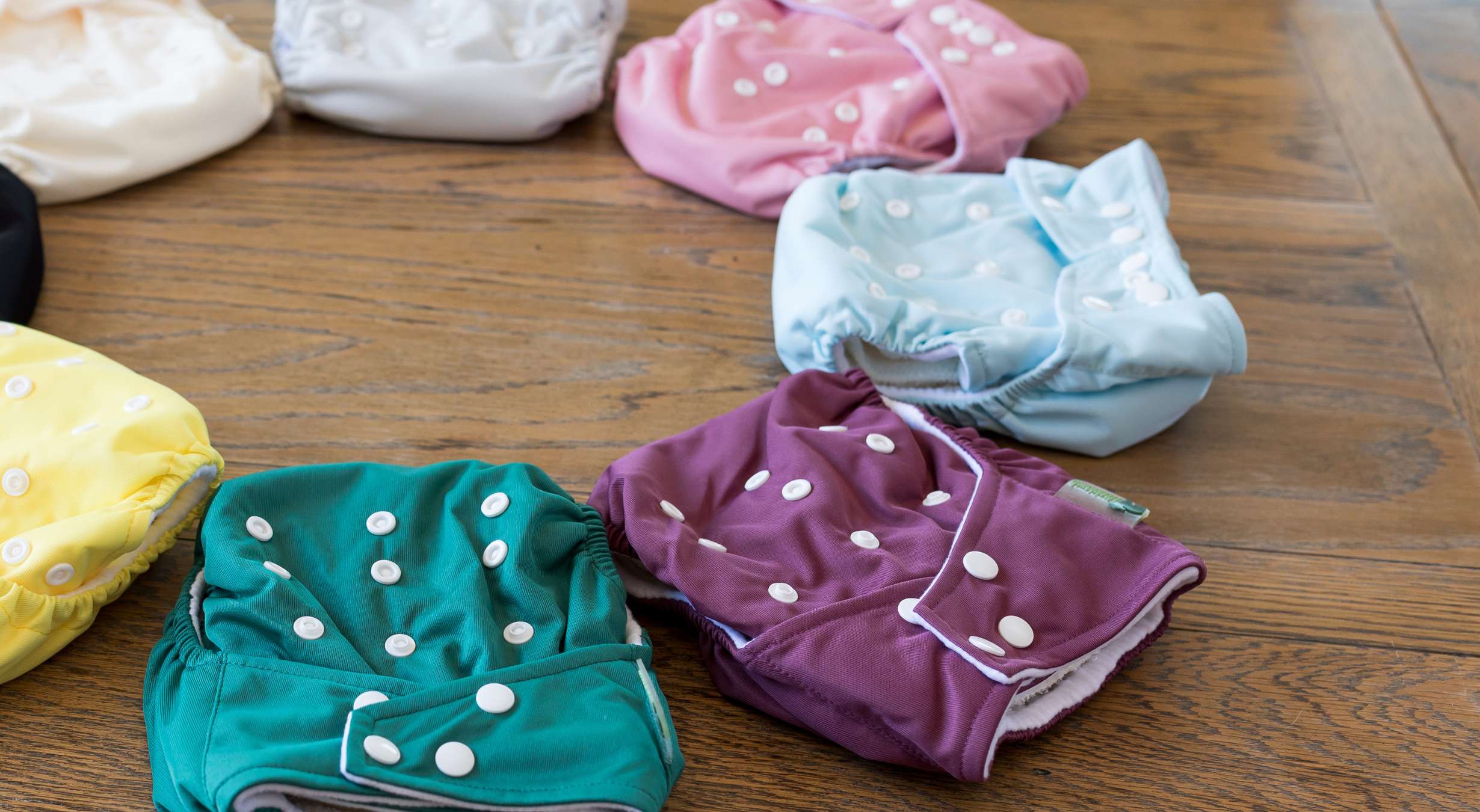The reusable nappy world can be confusing at first, especially when it seems like there is a whole new language to learn! So here we've completed a helpful A-Z glossary of all the cloth nappy terms and acronyms.
All In One Nappy (AIO):
All In One Nappies are a complete nappy with the waterproof outer layer built in - meaning they don't require a separate cover. All in One Nappies are the most similar to a disposable nappy, and are really convenient for quick and easy changes, childcare or outings.
LittleLamb do not make any AIO’s as we prefer a pocket nappy style for it’s quick drying time and super customisation. Once a pocket nappy is stuffed and ready, it essentially becomes a all-in-one nappy.
All In Two Nappy:
All In Two Nappies consist of a shell (the waterproof part) with separate inserts which may lay in the shell or snap into place. When wet, you can replace the insert for a fresh one and reuse the shell if it is not soiled.
(We call these our Two Part nappy).
Birth to Potty Nappy (B2P):
A Birth To Potty Nappy (also known as a Onesize Nappy) is designed to grow with your baby from birth, through to potty training. Usually the best fit is achieved once baby hits 10lbs.
Booster:
Boosters are multi-layered pads that can be used to boost the absorbency of your nappy.
Cover:
A Nappy Cover is a waterproof or water resistant cover which can be used over fitted or flat nappies to contain moisture. They can be found in a variety of materials including PUL (polyurethane laminate), wool and fleece, and are usually fastened with hook and loop (velcro) or snaps/poppers. They are also known as a 'Nappy Wrap'.
Diaper:
Diaper is the American term for a nappy.
Double Gusset:
A double panel of elastic around the legs of a nappy or nappy cover, which can help with containment. Our Pocket nappies have a double gusset, as do our wraps.
Dry Pailing:
The most common method of storing cloth nappies ready for washing. Dry pailing is the opposite of soaking nappies, and involves putting the dirty nappies inside a dry bucket, which can be lined with a mesh bag, or a hanging pail bag.
Fitted Nappy:
Fitted Nappies have a contoured shape with gathered edges around the legs and waist. They are fastened with either hook and loop (velcro), snaps/poppers or a nappy fastener and require a waterproof cover over the top. Fitted Nappies are much easier to use than flat nappies as they require no folding. Our fitted nappies come in bamboo or cotton.
Fleece:
A polyester fibre often used to make nappy liners. It is super soft, and resists water penetration. Our onesize pocket nappies are lined with fleece to provide a ‘stay-dry' layer next to the skin, and all our fitted nappies come with a fleece liner inside the nappy.
Hemp:
Hemp is a natural fibre made from the hemp plant.
Hook and Loop:
Another word for the velcro fastenings on nappies.
Insert:
Inserts are rectangular or contoured strips of fabric that are stuffed inside pocket nappies to provide absorbency. They can be made of hemp, microfibre, bamboo or any other absorbent material. Generally, Inserts and boosters are interchangeable.
Laundry Tabs:
On velcro fastening nappies, this refers to an extra space where you can stick the "hooks" whilst washing the nappies to prevent them catching on other items in the wash.
Liners:
Liners are a thin material used between the nappy and the bottom and serve two useful purposes; to keep poo away from the nappy to aid cleaning, and provide a 'stay dry' layer next to baby's skin. Liners can be single use paper or bamboo, or washable and reusable. Polyester fabrics such as microfleece wick moisture away from the skin. Liners are an optional cloth nappy accessory and are not essential.
Microfibre:
Microfibre is a super absorbent synthetic polyamide fibre that is often found in pocket nappy systems. It absorbs moisture very quickly and can hold up to 7 times its weight in water. It is exceptionally soft and holds its shape well, however it should not be used directly next to the skin as the tiny fibres can cause irritation. Microfibre retains its absorbency best when it is line dried.
Microfleece:
Not to be confused with microfibre, this is a material that can be used next to the skin and helps provide a stay-dry layer.
Mesh Laundry Bag:
Mesh laundry bags are commonly used to line the nappy bucket. They provide an effective means to transfer soiled nappies from bucket to machine without having to pick them up one by one. The whole bag can simply be placed inside the machine with the drawstring left open, and the nappies should naturally separate from the bag during the wash cycle.
Nappy Fastener:
An alternative method of holding flat nappies in place. Instead of the traditional nappy pins, a Nappy Fastener is a plastic gripper that uses little teeth to grab the fabric. It is considered a safer alternative to safety pins.
NNR:
NNR stands for 'not nappy related' and is often used in nappy chat groups.
One Size Nappy (OS Nappy/OSFA):
One Size Nappies are designed to fit from birth right up to potty training (approx 10-35lbs). They usually incorporate poppers down the front rise which allow you to adjust the size of the nappy as your baby grows.
Organic:
Organic fibre means that which comes from a plant that was grown without the use of chemical fertilisers and pesticides. Organic material usually comes at a higher price than regular material.
Pocket Nappy:
Pocket Nappies are two part system comprising a waterproof shell lined with an inner layer of microfleece or velour. There is a back opening between these two layers for absorbent inserts to be 'stuffed' inside. When 'stuffed' the nappy becomes an All-In-One nappy, but has the benefit of being a quick drying system as everything separates for washing and drying. Although Pocket Nappies require assembling, they are considered to be very easy to use and prove to be a popular choice for childminders or nurseries.
Popper:
A plastic snap fastening often found on nappies to fasten them around the waist, or on the front rise on One Size nappies. Also known as 'snaps'.
Prefold Nappy:
A Prefold is a rectangular shaped nappy that is stitched into 3 lengthwise layers, forming a thicker middle layer. They can be tri-folded inside a waterproof nappy cover, or folded and fastened with pins or a nappy fastener.
PUL:
PUL stands for Polyurethane Laminate, a material which is applied to fabric to make it water resistant. Many Nappy wraps are made with PUL, and Pocket Nappy and AIO systems incorporate it to make them waterproof.
Rise:
Refers to the front of a nappy, and typically used when referencing the adjustment of the snaps on a One Size Nappy. For example "adjust the rise snaps to make the nappy larger".
Snaps:
A plastic snap fastening often found on nappies to fasten them around the waist, or on the front rise on One Size Nappies. Also known as 'poppers'.
Terry Nappy / Terry Squares:
The Terry Nappy is the traditional nappy that your mother or grandmother would have used! A square piece of terry cotton (or more recently, sometimes bamboo) that can be folded in a manner of ways and fixed with pins or a nappy fastener. They are extremely versatile and quick to dry.
Training Pants:
A thicker, more absorbent style of underwear that can be used during the transition from nappies to potty training.
Wicking:
Wicking can mean two things; Positive - wicking is where stay dry layers or liners, such as microfleece are working correctly. These stay dry layers are designed to draw moisture through and into the absorbent parts of the nappy, thus wicking the moisture away from baby's skin. Negative - wicking can mean when moisture is wicked from the edges of the nappy onto clothing.
Wrap:
A Nappy Wrap is a waterproof or water resistant nappy cover which can be used over fitted or flat nappies to contain moisture. They can be found in a variety of materials, including PUL, wool and fleece, and are usually fastened with Aplix or Poppers. Also known as a "nappy cover".







